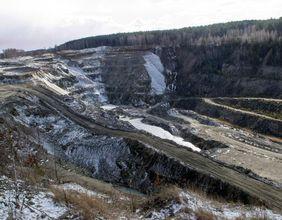Increase in use of nanopesticide in pest control and packaging, surge in demand for nanopesticide from the agricultural sector
PORTLAND, OREGON, UNITED STATES,, October 11, 2023 /EINPresswire.com/ -- The global nanopesticide market generated $0.5 billion in 2021, and is projected to reach $1.6 billion by 2031, growing at a CAGR of 12.5% from 2022 to 2031. The report offers a detailed analysis of the top winning strategies, evolving market trends, market size and estimations, value chain, key investment pockets, drivers & opportunities, competitive landscape and regional landscape. The report is a useful source of information for new entrants, shareholders, frontrunners and shareholders in introducing necessary strategies for the future and taking essential steps to significantly strengthen and heighten their position in the market.
Nanopesticides can be employed as vectors, both directly and indirectly as it inherits some of the fundamental properties, such as permeability, stiffness, crystallinity, biodegradability, and thermal stability, which are advantageous over commonly used synthetic pesticides. Nanopesticides are used to manage a wide range of pests and disease vectors, including mosquitoes, ticks, rats, and mice. In agriculture, nanopesticides are used to manage weeds, insect infestations, and illnesses.
Request Sample Report @ https://www.alliedmarketresearch.com/request-sample/17829
Nanopesticides in the agriculture sector includes fungicides, herbicides, insecticides, rodenticide, and others. They are used in all farming industries, including horticulture, dairy farming, poultry, crop shifting, and commercial planting. Nanopesticides are used by farmers to control weeds, increase agricultural productivity, and preserve agricultural product. These minimize total chemical consumption, harmful residues, and offer overall crop protection.
Nanopesticide formulations can improve water solubility, bioavailability, and preserve agrochemicals from environmental degradation, revolutionizing crop pest control against diseases, weeds, and insects. Nanopesticides protect plants and boost leaf coverage. Nanopesticides, comprising of nanoscale active ingredients with broad-spectrum insect repellent, bactericidal, and fungicidal capabilities, has recently gained prominence for tomato disease management.
Purchase Enquiry Report @ https://www.alliedmarketresearch.com/purchase-enquiry/17829
The growth of the global nanopesticide industry is majorly attributable to its wide use in applications, such as pest control and packaging. Also, surge in use of nanopesticide in food packaging is expected to drive the market growth during the forecast period. There is rising food waste and loss caused during the different stages of the supply chain process. According to the FAO, food wastes amount to approximately $310 Bn in developing economies and $680 Bn in industrialized economies. The statistics describe the increasing concern for food waste. Consumption of fresh foods and vegetables has been increasing around the globe.
Agro-economic nations are emphasizing on exporting fresh fruits and vegetables to mitigate the demand gap. This is driving the demand for nanopesticides in the packaging of these fresh foods to lessen the loss in the supply chain and maintain the freshness of products. Nanopesticides are mostly used in food packaging containing nanoparticles that are utilized to impart antimicrobial action and increase barrier qualities, which extend the shelf life and freshness of packaged food.
Key Market Players:
Stockton Biotechnologies, Bayer AG, BioWorks, Inc., Marrone Bio Innovations, Camson Biotechnologies, ANDERMATT BIOCONTROL AG, Migrow Agro Solution, Corteva, Plantix Crop Care
COVID-19 Analysis:
The COVID-19 pandemic had a negative impact on the food and agriculture industry. Due to social alienation, COVID-19 has harmed food and agricultural productivity including nutrition as well as farmer livelihoods. However, the consumption of fruits & vegetables among the populace increased during the pandemic owing to the health benefits associated with them. Nanopesticides are utilized in packaging of fruits and vegetables in order to maintain the freshness in these perishable food products. These also improve the chemical content of fruits and vegetables, such as beta carotene, naringenin, and chlorogenic acid while also providing a healthy source of fiber, which reduces constipation, decreases cholesterol, regulates blood sugar levels, and aids with weight management. Nanopesticides are also widely used in food packaging containing nanoparticles which are used to impart antimicrobial action, which extend the shelf life and freshness of packaged food. Consequently, the growing consumption of fruits & vegetables along with surge in demand for food packaging is anticipated to propel the nanopesticide market during the pandemic period.
Interested In Purchase Report @ https://www.alliedmarketresearch.com/checkout-final/90b58228879d9de43b62c6235f11a9cc
Q1. What is the estimated industry size of Nanopesticide Market?
Answer: The global nanopesticide market was valued at $0.5 billion in 2021, and is projected to reach $1.6 billion by 2031, registering a CAGR of 12.5% from 2022 to 2031.
Q2. What are the key drivers of Nanopesticide Market?
Answer: Increase in use of nanopesticide in applications, such as pest control and packaging is predicted to drive the market growth during the forecast period. In addition, surge in demand for nanopesticide from the agricultural sector is likely to propel the nanopesticide market growth during the forecast period.
Q3. What is the leading application of Nanopesticide Market?
Answer: Pest control the leading application of Nanopesticide Market
David Correa
Allied Analytics LLP
+1 800-792-5285
email us here
Visit us on social media:
Facebook
Twitter
LinkedIn






